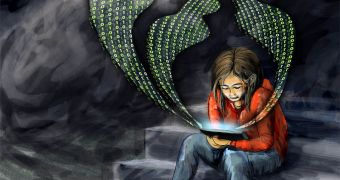As instances of people being bullied in the online environment increase in numbers, experts find themselves lacking a clear definition of what cyberbullying actually is. A natural understanding of what the concept implies does exist, but some of its nuances have thus far remained unstudied.
This type of behavior can primarily be identified among adolescents and teenagers. These individuals are extremely well connected to each other via cell phones and the Internet, instant messaging and social networks, and therefore extremely prone to feeling the full effects of cyberbullying.
One of the most damaging traits this behavior has is that it's unrelenting. In the old days, kids who were bullied at school were only bullied at school. Now, the behavior extends to their homes as well, as they are harassed whenever they open their computers.
“Cyberbullying and mischief appears to increase with age through childhood and adolescence, so that it is a bigger problem in high school than in junior high,” says researcher Sheri Bauman, who is based at the University of Arizona.
“Given that bullying has existed throughout history, it surprises me that we have yet to develop really effective strategies to prevent it,” adds the scientist, one of many experts involved in analyzing the causes and effects of such damaging behaviors.
“I think students underestimate their experiences with bullying because it is not fun to view yourself as a 'victim of bullying,' no matter how it is defined,” explains the co-director of the Cyberbullying Research Center website, Justin Patchin.
What is interesting to note is that cyberbullying – as a behavior – appears to continue well into adulthood. Some people report being bullied online by the same people that used to bully them in high school, nearly 30 years earlier.
“Cyberbullying occurs in young people from all socioeconomic groups, including students with disabilities. Chronic bullying and cyberbullying behaviors, for both perpetrator and victim, may persist into adulthood as well,” Bauman explains.
“It is important to have a consensus definition of cyberbullying for prevention and intervention effort,” explains Queensland University of Technology expert Marilyn Campbell, from Brisbane, Australia.
Such definition could be used for both research and building public policies, aimed at stopping the behavior dead in its tracks. “The nuances of words are important for effective prevention and deterrence, with policy enforcement requiring clarity and precision in language,” Campbell explains.
“School policies may be practically and legally ineffectual if the language used is too vague and does not address the foreseeable risk,” she concludes, as quoted by the US National Science Foundation (NSF).

 14 DAY TRIAL //
14 DAY TRIAL //